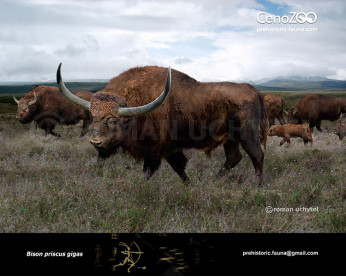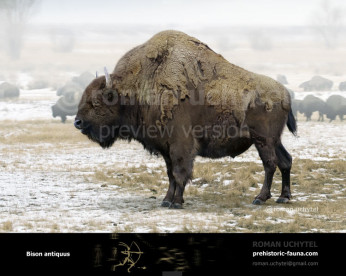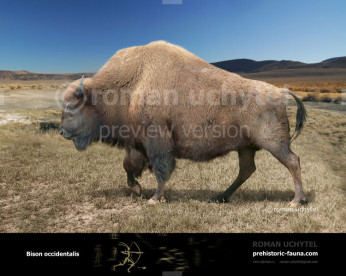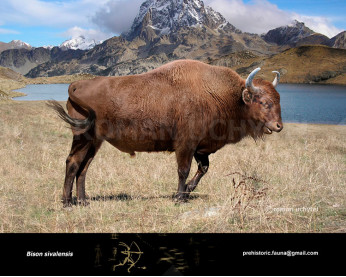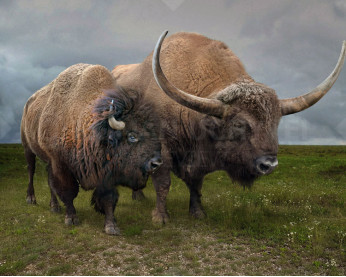Bison latifrons (Giant North American Bison)
160160Bison latifrons (Bison latifrons Harlan, 1825)
Order: Artiodactyla
Family: Bovidae
Dimensions: length - 4,5 m, height - 2,5 m, weight - 2000 kg
Temporal range: during the late Pleistocene epoch (North America)
Bison latifrons is thought to have evolved in midcontinent North America from Bison priscus, another prehistoric species of bison which migrated across the Bering land bridge between 240,000–220,000 years ago (Pleistocene epoch.).
Bison latifrons reached a shoulder height of 2.5 meters and weighed over 2,000 kilograms. It competes with the "giant Africa buffalo" Pelorovis for the title a the largest bovid that ever lived. The horns of Bison latifrons measured as great as 213 centimeters from tip to tip, compared with only 66 centimeters in modern Bison bison. The known dimensions of the species are much larger than any extant bovid, including both extant species of bison — the American bison and the European bison. Based on a comparison of limb bones between B. latifrons and B. bison, the mass of the former is estimated to have been 25%–50% greater than that of the latter. In fact, B. latifrons is possibly the largest bovid in the fossil record. The large, thick horns of the males are believed to have been employed as a visual deterrent to large carnivorous megafauna such as the saber-toothed cat (Homotherium crenatidens), american lion (Panthera atrox), short-faced bear (Arctodus) and ground sloth, and also to establish dominance in battle with other males for the right to mate.
Bison latifrons (Bison latifrons Harlan, 1825)
Order: Artiodactyla
Family: Bovidae
Dimensions: length - 4,5 m, height - 2,5 m, weight - 2000 kg
Temporal range: during the late Pleistocene epoch (North America)
Bison latifrons is thought to have evolved in midcontinent North America from Bison priscus, another prehistoric species of bison which migrated across the Bering land bridge between 240,000–220,000 years ago (Pleistocene epoch.).
Bison latifrons reached a shoulder height of 2.5 meters and weighed over 2,000 kilograms. It competes with the "giant Africa buffalo" Pelorovis for the title a the largest bovid that ever lived. The horns of Bison latifrons measured as great as 213 centimeters from tip to tip, compared with only 66 centimeters in modern Bison bison. The known dimensions of the species are much larger than any extant bovid, including both extant species of bison — the American bison and the European bison. Based on a comparison of limb bones between B. latifrons and B. bison, the mass of the former is estimated to have been 25%–50% greater than that of the latter. In fact, B. latifrons is possibly the largest bovid in the fossil record. The large, thick horns of the males are believed to have been employed as a visual deterrent to large carnivorous megafauna such as the saber-toothed cat (Homotherium crenatidens), american lion (Panthera atrox), short-faced bear (Arctodus) and ground sloth, and also to establish dominance in battle with other males for the right to mate.

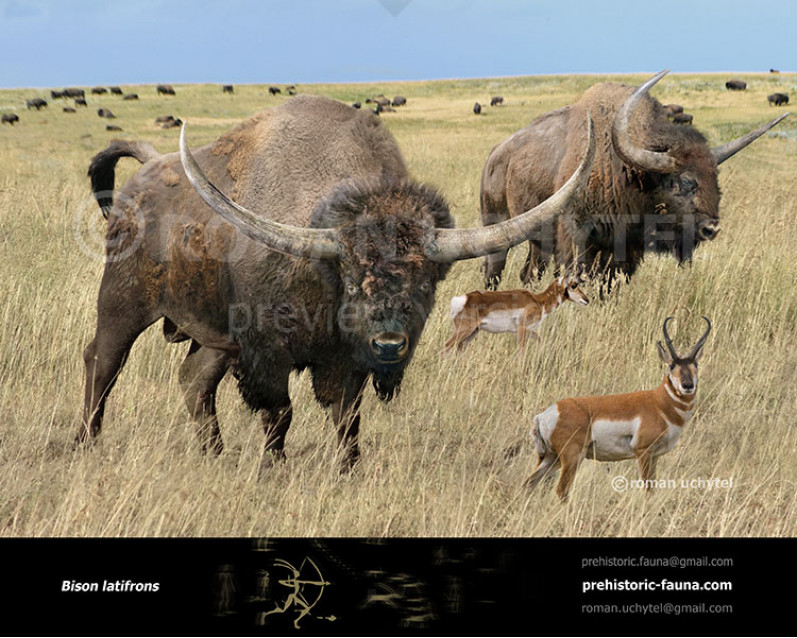
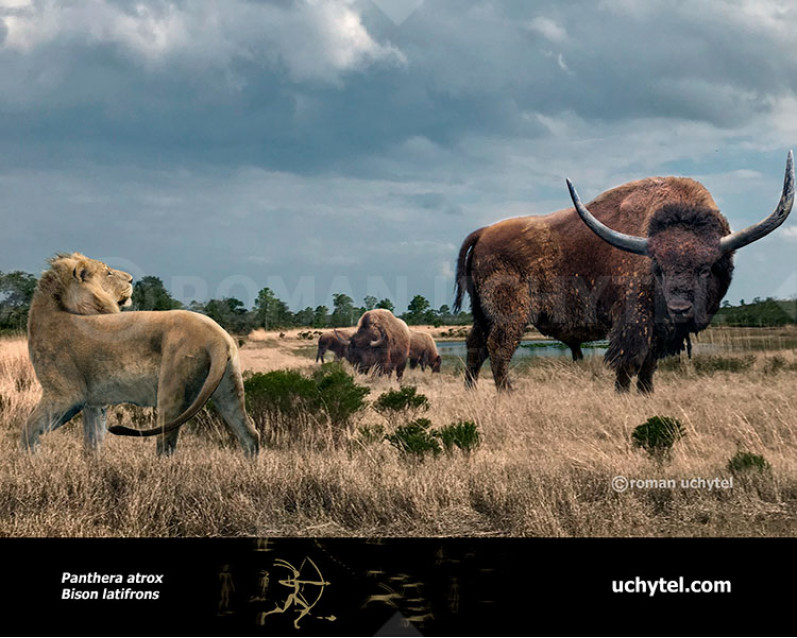
-797x638.jpg)
-797x638.jpg)
-2015-797x638.jpg)
-797x638.jpg)


-70x56.jpg)
-70x56.jpg)
-2015-70x56.jpg)
-70x56.jpg)
